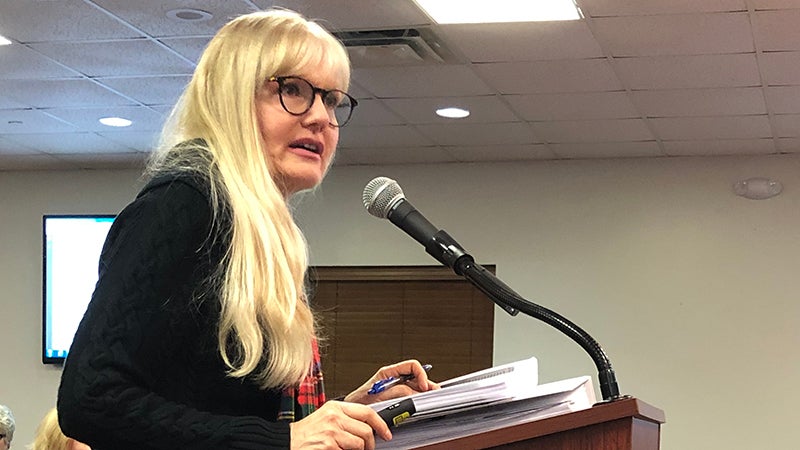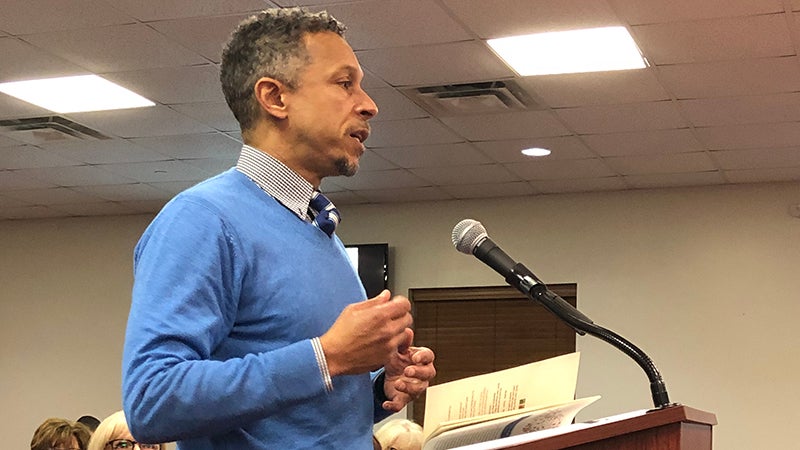Polk calls for public hearing on scenic byway
Published 8:00 am Saturday, January 26, 2019
State, local committee presents new route in Lynn/Tryon
TRYON — The Polk County Board of Commissioners wants to know what the public thinks about designating parts of Highway 108, Howard Gap Road and Erskine Road in the Lynn and Tryon areas as a scenic byway.
Commissioners met Monday and heard from Jeff Lackey, with the North Carolina Scenic Byway program and members of the local Scenic Byway Subcommittee Dorothy Easley, Melissa LeRoy, Becky Oliver and Olivia Whiteside.
After a lengthy presentation and discussion, commissioners decided to hold a public hearing at 7 p.m. on Monday, Feb. 4.
Lackey said the scenic byway program has been around almost 30 years in North Carolina and there are currently 60 scenic byways across the state. He explained that the process includes a two-phase application process.
“We’re looking for routes that already have protective measures in place,” Lackey said.
He said after the designation, no more outdoor advertising will be allowed. The byway has to be at least one mile in length and there has to be public access. He also said there has to be strong local support.
“We want to make sure we’re not coming here telling you what to do,” he said.
Commissioner Jake Johnson asked if there have ever been before and after traffic studies done.
Lackey said no, but there have never been any complaints about increased traffic.
Commissioner Chair Tommy Melton asked if being designated as a scenic byway restricts property owners. Lackey said, “not at all.”
Easley reviewed the process of how the scenic byway was proposed, including when the North Carolina Department of Transportation proposed widening Highway 108 between Columbus and Tryon last April. She said residents against the widening included a petition to the governor with 2,400 signatures and county commissioners supporting the idea of the scenic byway project and the extensive research subcommittee members have done over the last 8 months.
Easley said what a scenic byway does includes communicating to visitors that local government values its citizens and a higher quality of life for them; helps the county leverage some of it most exceptional assets; gives the county free advertising worldwide about its natural, historic and local business resources; supports existing small businesses and grandfathers in existing signage; promotes conservation of the county’s rural appearance and history to keep them scenic and promotes sustainable economic development for generations.
What scenic byways do not do, Easley said, includes not regulating businesses as the county does that. Scenic byways also do not cause material increases in traffic along the byway; do not allow new businesses to have off premise signage and do not guarantee future prohibition on highway expansion if unsafe. She also spoke of all the farmlands, mature forests, landscapes and mentioned the historic GreenLife Inn at the Mimosa being on the route, as well as the historic Sidney Lanier house, the Pacolet River and bridge, Howard Gap Road, historic homes, the historic Mill Farm Inn, Emma Payne Erskine’s historic cottage, historic Lynncote and Erskine home and the historic Erskine Pond. The route also includes the second largest black walnut tree in North Carolina at the Sidney Lanier house.
“How many places have that much history on a scenic byway,” Easley said. “Not many.”
Commissioner Vice Chair Myron Yoder said he likes the idea of a scenic byway but he will always lobby for sidewalks, a bike path and street lamps along Highway 108 for the safety of pedestrians.
“Sidewalks and bike paths would take out the historic tree, so we will never be in favor of that,” Whiteside said.
The subcommittee has privately raised $3,500 for the application, with more coming in, according to Whiteside.
Johnson said he would like to have a couple of public hearings, as there may be homeowners who want to speak for or against the scenic byway.
The public hearing will begin at 7 p.m. on Feb. 4 in the R. Jay Foster Hall of Justice, located on the second floor of the Womack building in Columbus.







